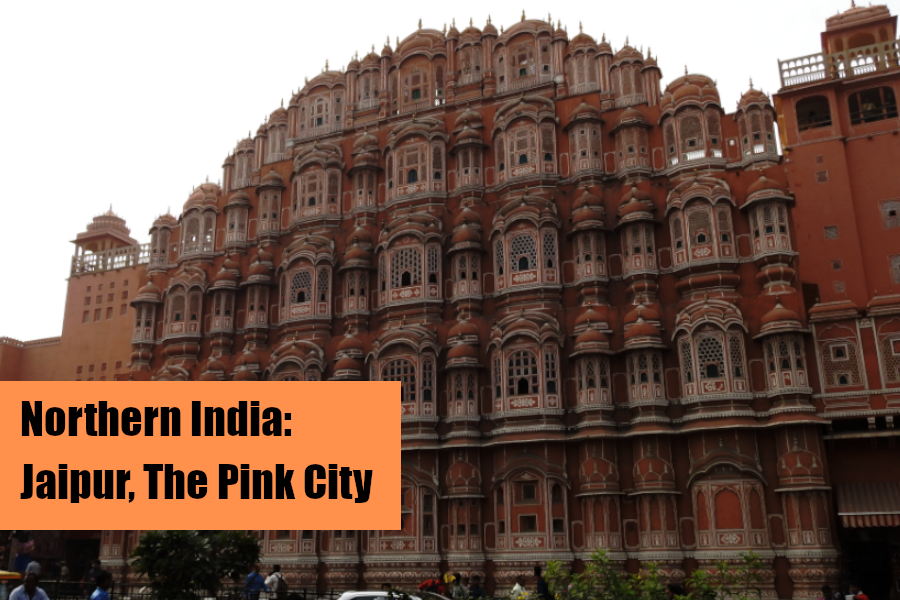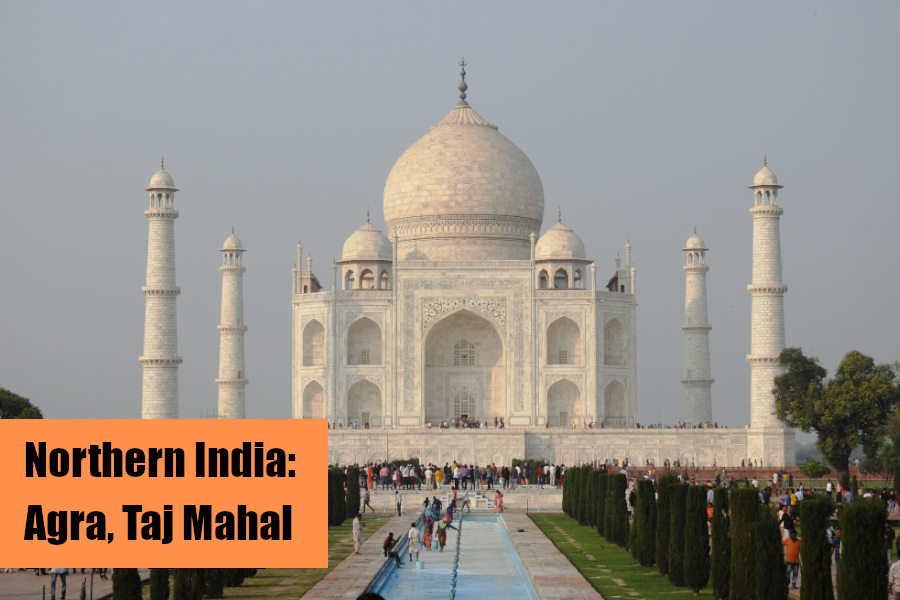Our tour of Northern India took us to the city of Jaipur. We traveled to Jaipur from Pushkar by local bus, which was not dramatically different from the tourist bus we took previously in India. It was a bit more crowded, there were people standing in the aisle who did not have seats, and there was no air conditioning. It was an older bus but plenty comfortable for the two hour journey. When we arrived in Jaipur we enjoyed lunch at our hotel, which was a charming heritage property.
Jaipur is the capital of India’s Rajasthan state and is called the “Pink City” because most buildings in the historic city center are painted a pink-toned terracotta color. The color historically represents welcoming and hospitality. We took a walk through the market in the historic district and saw stone and marble statues of various Hindu deities being made by hand. Apparently you can order a statue of any size in this area to be made to your specifications if you happen to need one for your home or a temple. We noticed a large population of monkeys roaming the streets in downtown Jaipur. They did not seem shy towards humans and were always on the prowl for a snack. We also enjoyed a lovely dinner at yet another rooftop restaurant, this one overlooking the city of Jaipur.
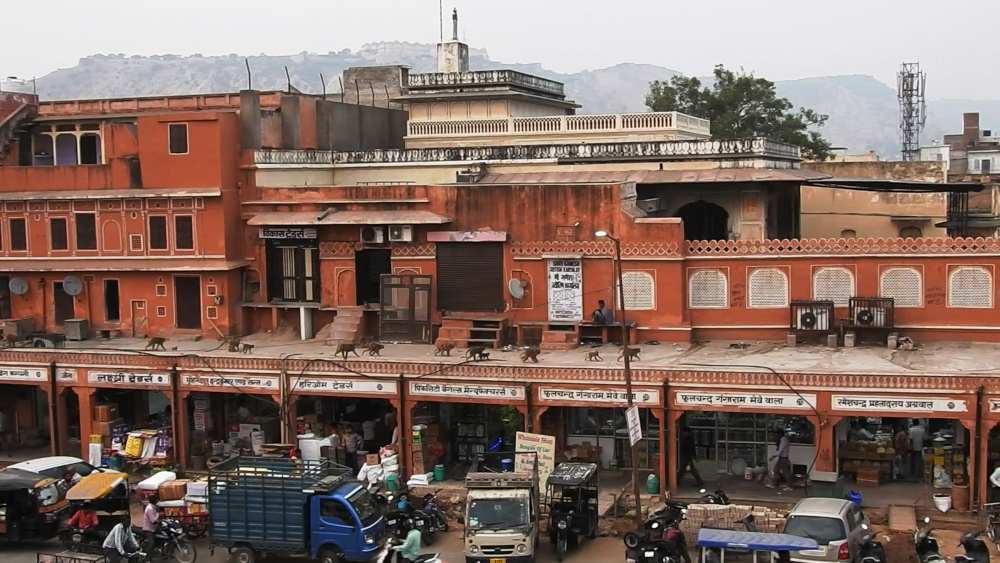
While in Jaipur our guide hired a tuk-tuk driver to take us around the city for some sightseeing. Our first stop was the Amer Fort, a massive fort built high on a hill. The original structure was built in 967 and improvements and additions were built over hundreds of years. I was quite disappointed to see that elephants were being used to give tourists rides on their backs up to the fort. The walk up was not very long and having animals there to shuttle people up was completely unnecessary. We actually saw elephants with their owners riding them on the road in traffic alongside cars, motorbikes, and tuk-tuks in Jaipur. It was heartbreaking to see these magnificent animals outside of their natural habitat being used for tourists’ entertainment. Once inside the fort we were barraged with some of the most aggressive touts we have seen yet trying to sell guide books and souvenirs. They were relentless and would not take no for an answer.
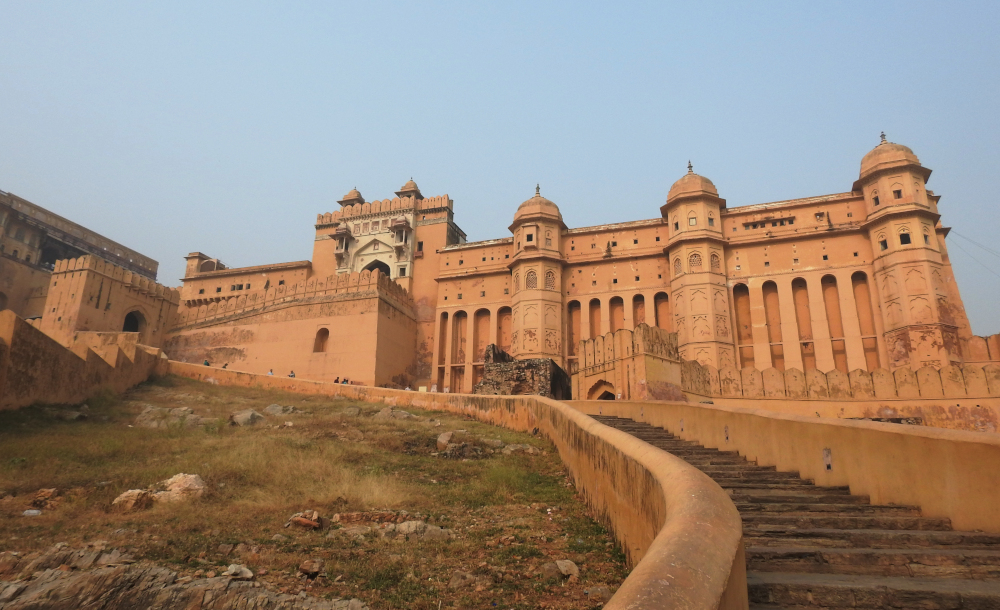
After buying an entrance ticket and escaping the touts we enjoyed touring the fort’s interior courtyards, winding staircases, pavilions, and temples. The interior rooms are completely bare so not that interesting, but the size and scale of the fort along with the use of marble and red sandstone throughout was impressive.

Our next stop was one India’s old stepwells. This one was in fine condition but no longer in use. Stepwells in India were originally built to store water for use throughout seasonal fluctuations in water availability.

We then briefly stopped to view the Jahal Mahal, known in English as the Water Palace, from the side of the road. It is a former palace built in the center of a lake. The building is currently undergoing restoration and can’t be accessed by visitors at this time.
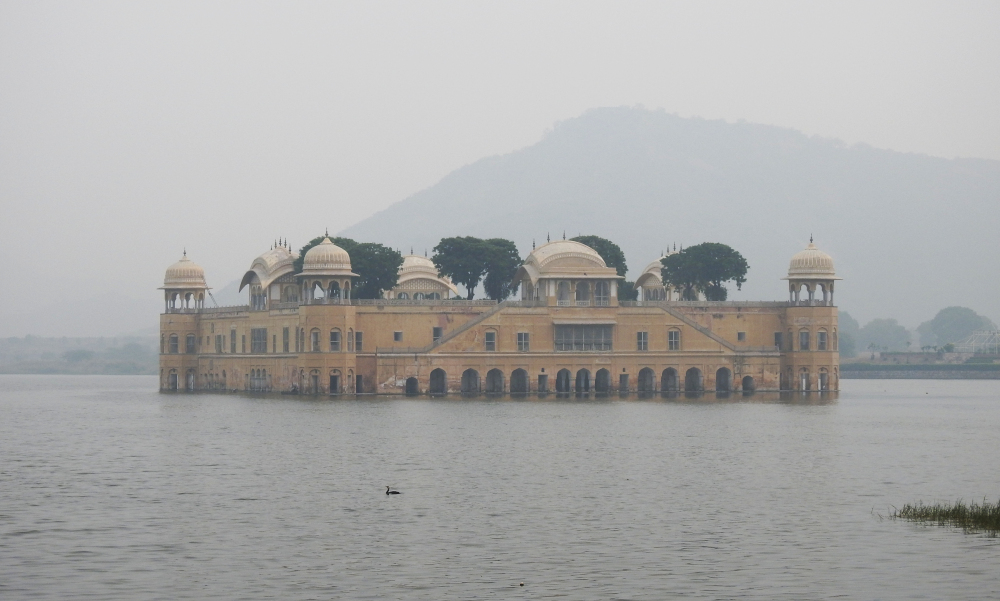
Next we stopped at a place our tuk-tuk driver recommended, Maharaniyon Ki Chhatiryan, a tucked away peaceful garden with cenotaphs for three deceased Maharanis, or royal ladies. The cenotaphs were gorgeous and we actually saw a pre-wedding photoshoot for a young couple taking place there. It was a rare tranquil spot among the otherwise noisy and chaotic city and a pleasant surprise.
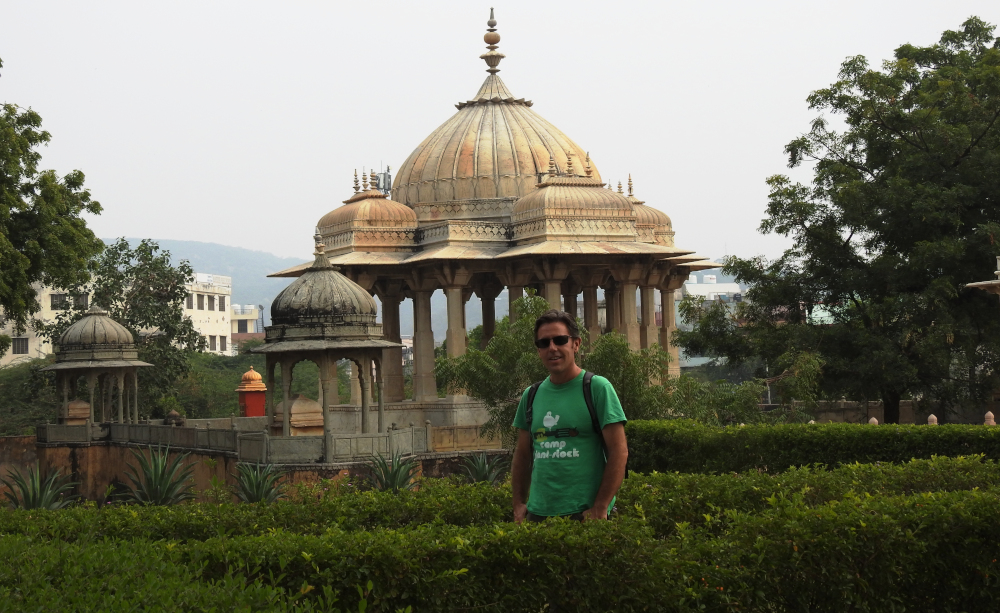
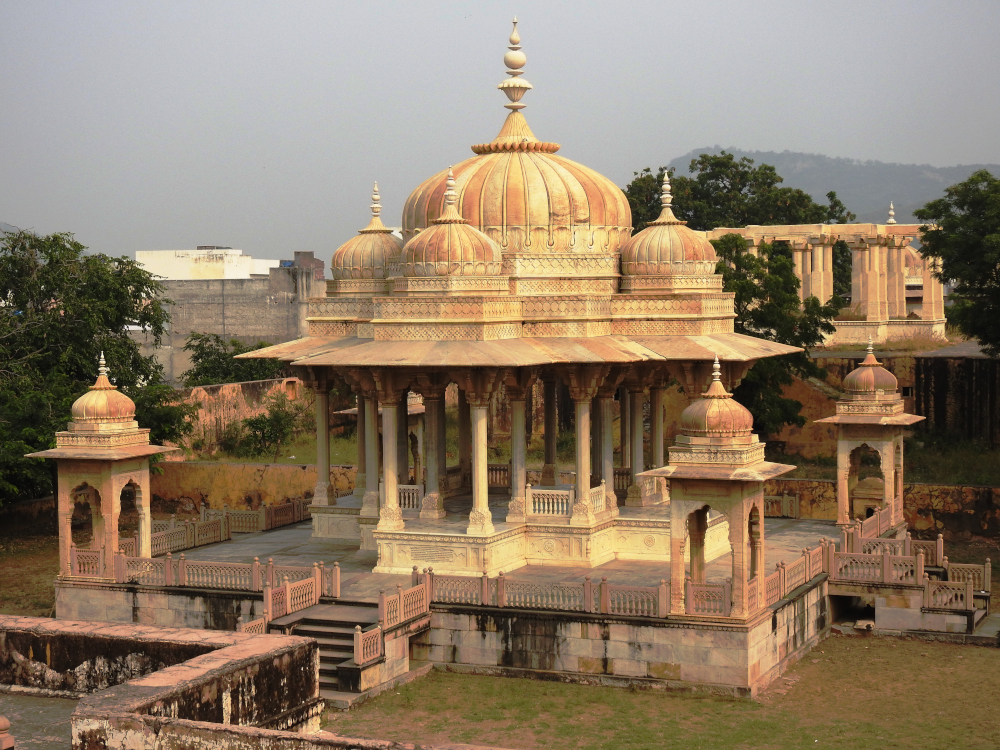

Next we stopped off to view the Hawa Mahal palace, known as the Palace of the Wind in English. We only viewed the palace from the street outside and did not go inside at all. It is a distinctive building with 953 small windows that resemble the honeycomb of a beehive. The design was intended to allow royal ladies to observe activity on the street below without being seen.
The last stop on our sightseeing tour was the City Palace, which was built in 1727 by Maharaja Sawai Jai Singh II. The palace complex includes several courtyards, gardens, museums, and a cafe. The palace staff wear historical costumes and will allow visitors to take photos with them although they do of course want a tip as we learned after taking a photo.

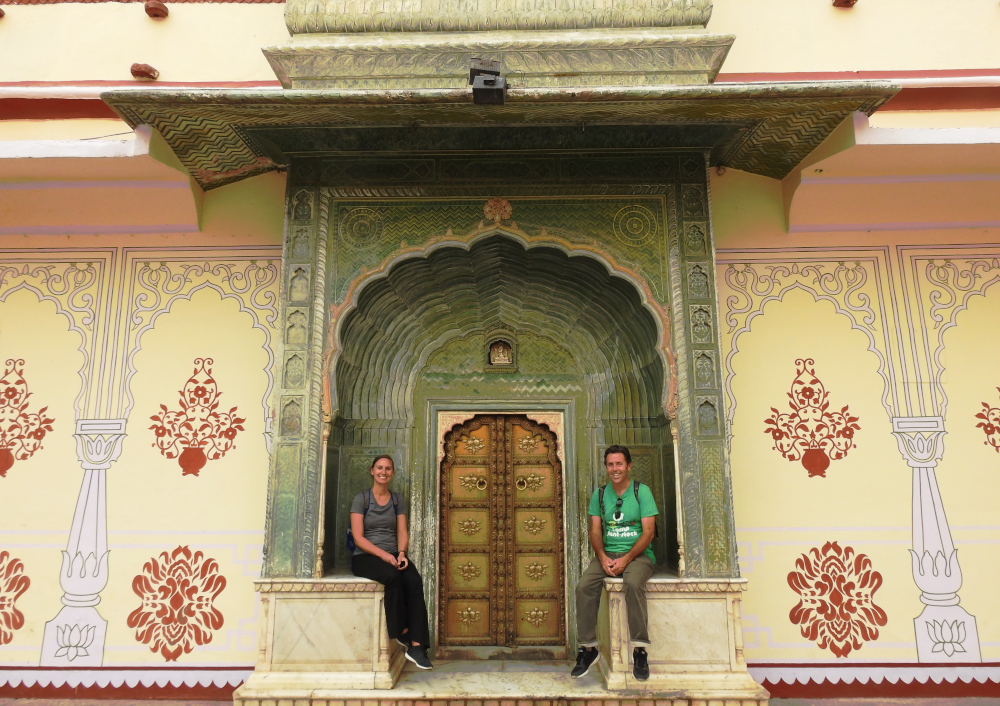


One evening our guide arranged for our group of seven to go see a Bollywood movie at the Raj Mandir theater in Jaipur. The theater had an opulent interior with lush carpets and chandeliers, much fancier than the movie theaters we have at home. I felt under dressed in my very casual outfit. There is only one screen that shows one film per evening and the seating area in the theater was huge. The movie we saw was House Full 4. It wasn’t in English but it was a silly comedy filled with classic Bollywood dance numbers so understanding all the dialogue wasn’t critical for us to enjoy it. The crowd laughed and yelled out a good bit during the film and it was quite a fun evening out on the town.
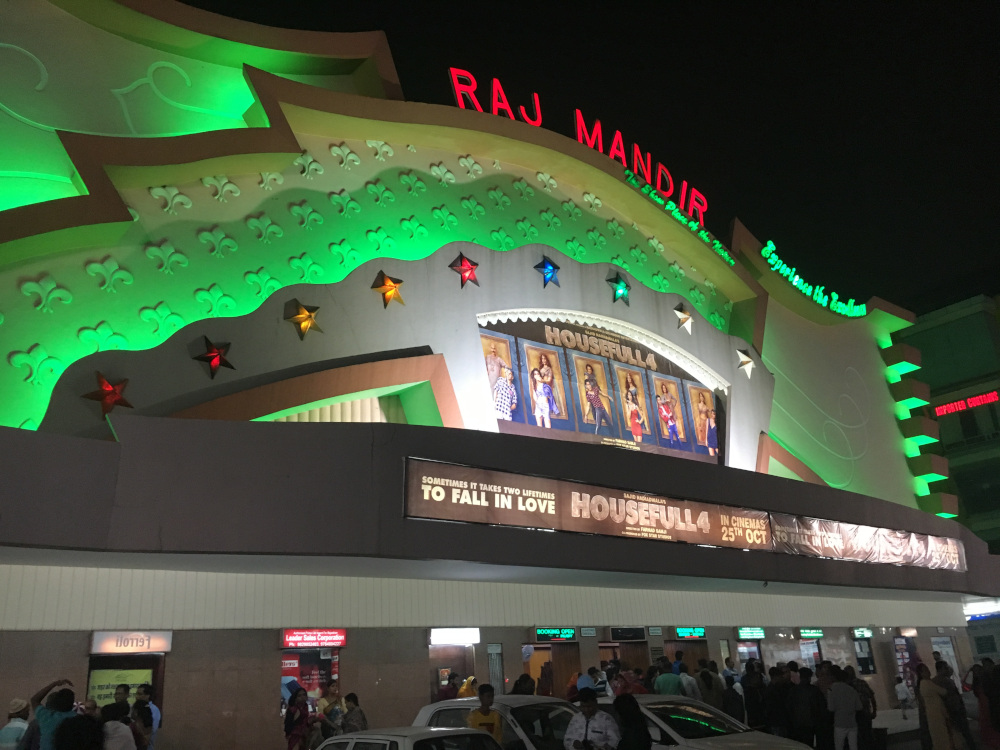
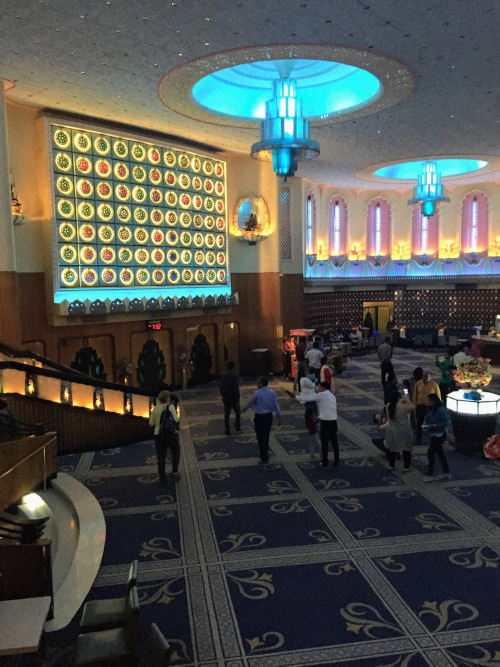
Bollywood Theater Interior 
Bollywood Theater Screen 
Bollywood Theater Interior
As you can probably see from our photos, the air has remained hazy as we travel around North India. The air quality has been poor and from what I have read, that is the norm for this time of year in this part of North India. We are hoping that as we move south the air quality will improve.

